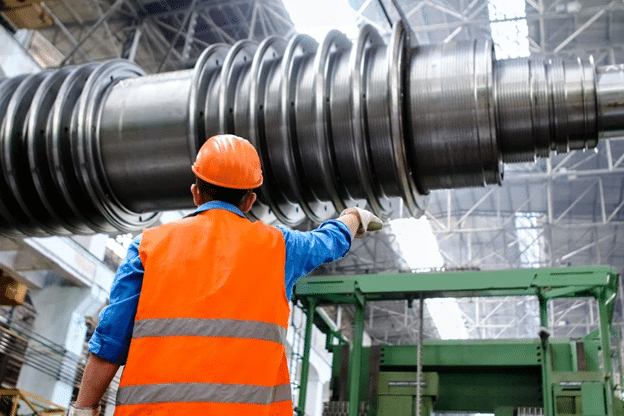Image source: https://www.pexels.com/photo/man-wearing-orange-hard-hat-2760241/
When working with industrial mechanical systems, companies need to have a keen understanding of the legal and safety considerations that shape the landscape.
These aren’t mere boxes to tick; they’re vital components in safeguarding operations and ensuring sustainability.
Whether it’s navigating complex regulations or integrating new technologies responsibly, industries face multifaceted challenges daily. So, let’s delve into six legal and safety considerations and explore how they impact the smooth functioning of mechanical systems.
1. Navigating Regulatory Frameworks
Keeping up with ever-changing regulations in industrial settings can feel like navigating a maze. For mechanical systems, aligning with standards from bodies like OSHA or the EU’s Machinery Directive is crucial.
Implement regular compliance audits to catch gaps early on. And integrate a dedicated compliance team within your operations to stay ahead of new requirements and mitigate health and safety risks efficiently. Investing in staff training ensures everyone understands and follows best practices without delay.
Also, consider using digital tools that track regulation changes to get real-time updates and guidance. Ultimately, proactive strategies can save both time and resources while maintaining safety and legal integrity.
2. Advanced Risk Management Techniques for Mechanical Systems
Managing risks in mechanical systems is like handling a jigsaw puzzle, where each piece matters. Start with detailed risk assessments to identify potential hazards. Implement real-time monitoring technologies that catch issues before they escalate into major problems. And consider predictive analytics – using historical data to forecast future risks and prepare solutions ahead of time.
Also, cross-train employees on safety protocols, ensuring quick and effective responses to any incidents.
Maintain open communication lines across teams, too, for continuous improvement and adaptability in strategies. By layering these advanced techniques, businesses create a robust shield against unforeseen disruptions or costly downtimes.
3. The Role of Automation in Accident Prevention
Automation acts like an extra set of eyes on the factory floor, significantly reducing human error. Automated systems can handle repetitive tasks with precision, lessening fatigue-related mistakes.
Implement sensors and machine learning algorithms that monitor machinery health and worker safety conditions continuously. By integrating AI-driven data analysis, companies can predict and prevent accidents before they occur.
Training workers to work alongside automation ensures a smooth transition and maximum safety benefits. Ultimately, combining human oversight with automated support creates a safer working environment where potential hazards are addressed proactively rather than reactively.
4. Legal Implications of Machine Learning Integration in Industrial Settings
Machine learning brings exciting possibilities but introduces legal challenges too. Data privacy concerns arise, especially with systems that collect and analyze employee information.
It’s essential to align machine learning projects with existing data protection laws. Ensure transparency about data usage and secure informed consent from all parties involved.
Liability can also become a gray area when machines make decisions—clear contracts define responsibilities and accountability in case of mishaps.
By carefully navigating these legal implications, businesses can harness the power of machine learning while safeguarding themselves against potential lawsuits or regulatory penalties.
5. Proactive Maintenance: A Strategy for Minimizing Legal Liabilities
Think of proactive maintenance like regularly tuning a car or truck to prevent breakdowns and reduce the risk of accidents. Just like you can avoid getting into a road accident (and then needing to search for “a truck accident lawyer near me”), proactive maintenance can catch issues early to avoid problems.
Documenting these efforts helps prove compliance with safety standards, reducing liability risks if incidents occur.
Employ predictive maintenance technologies that analyze system data in real time, highlighting potential failures before they happen. And train teams on the importance of timely upkeep and the legal repercussions of neglecting it.
By staying ahead with proactive measures, businesses not only minimize legal exposure but also ensure smoother operations and longer equipment lifespan.
6. Understanding the Environmental Impact Regulations Have on Mechanical Systems
Industries face growing pressure to meet environmental regulations affecting mechanical systems. These rules, such as those outlined in the EPA guidelines or EU directives, target emissions and energy efficiency.
Businesses must assess their machinery’s environmental footprint and explore upgrades or modifications to comply with these standards. Employing eco-friendly materials and optimizing processes can reduce waste and emissions significantly.
It’s wise to establish sustainability initiatives that go beyond mere compliance, potentially providing tax incentives or brand benefits.
By proactively embracing these changes, companies not only protect themselves legally but also contribute positively to global environmental efforts.



